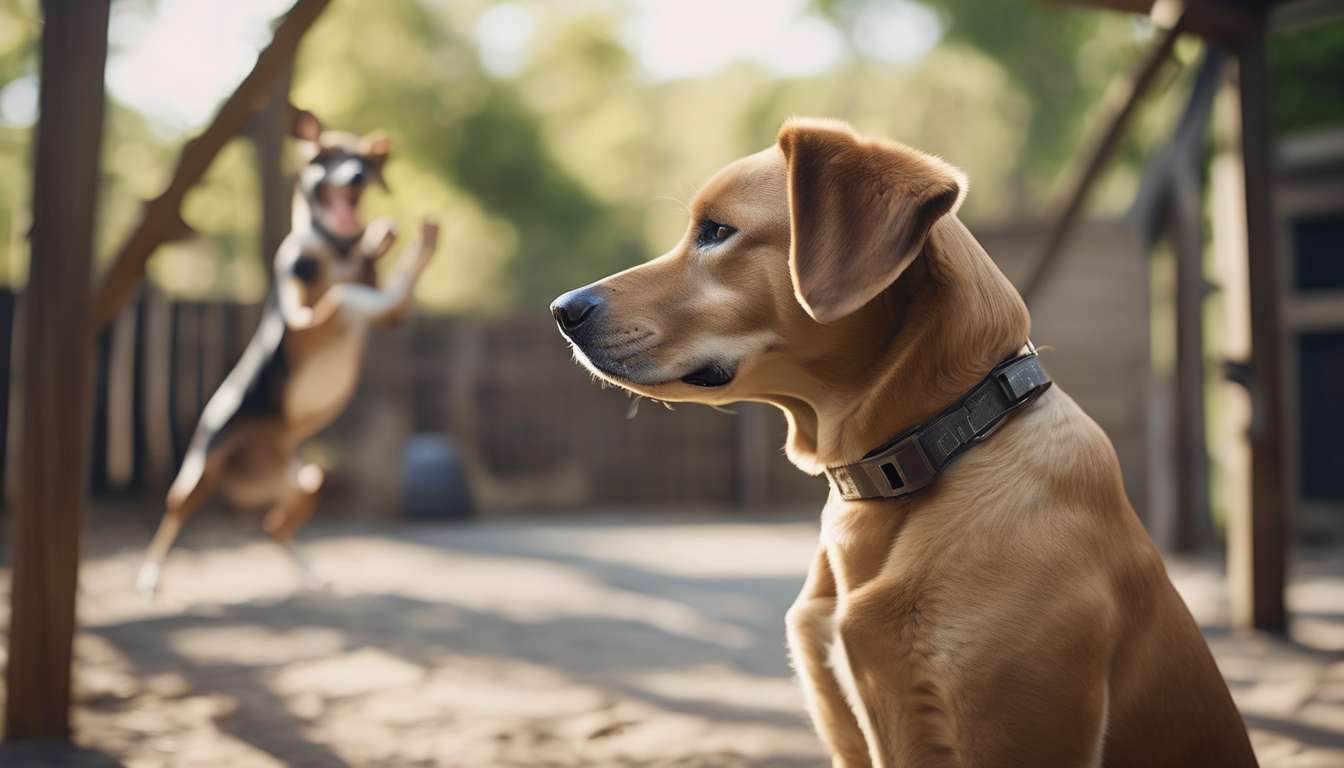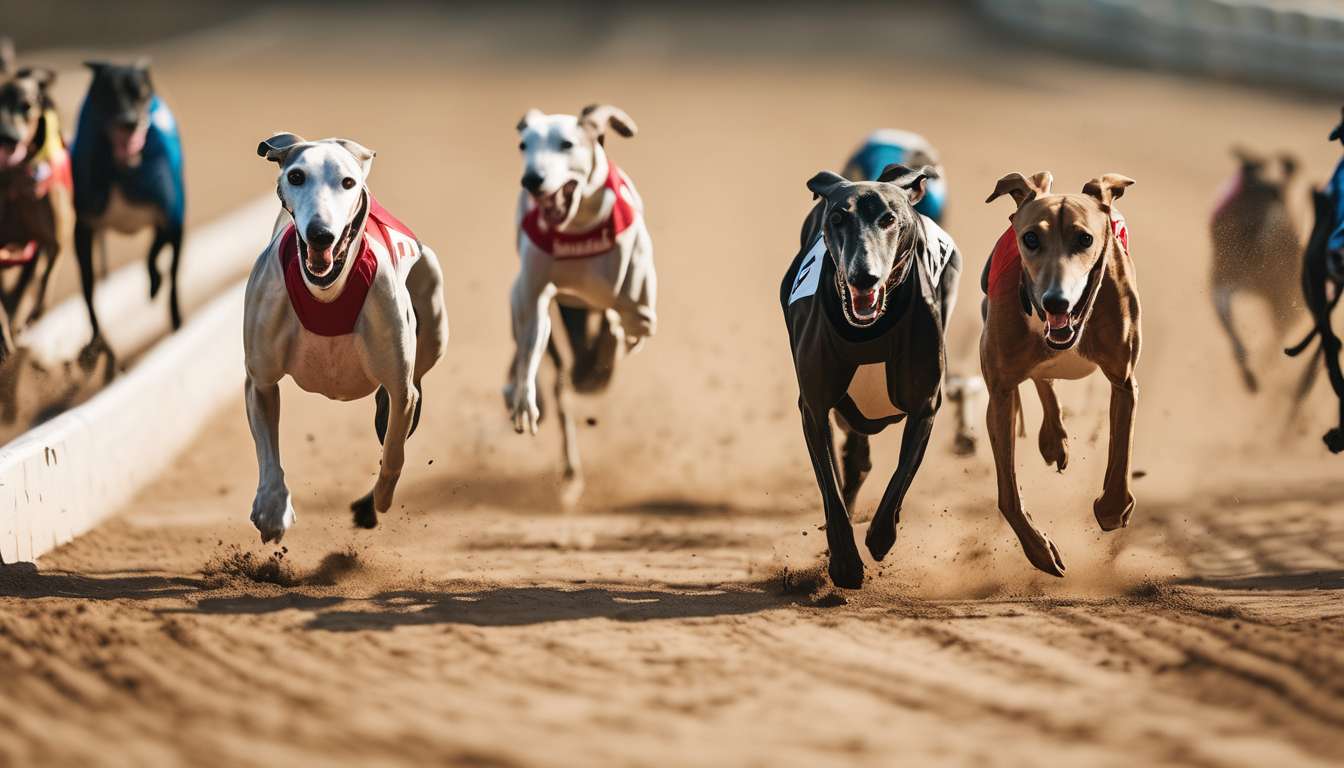In the world of dog training and kennel management, communication with our canine companions is of utmost importance. Dogs, much like us, have their own language, rich with signals and cues that reveal their emotions, needs, and intentions.
In our pursuit to strengthen the bond between humans and dogs, we have identified seven crucial trainer and kennel signals to watch. These signals are not just mere actions but a dialogue that can guide us to understand our four-legged friends better.
By recognizing and interpreting these signals, we can:
- Ensure a healthier, happier environment for the dogs under our care.
- Enhance our training methods.
- Improve the overall well-being of our dogs.
- Ensure that they feel safe, secure, and understood in our shared spaces.
Together, let’s delve into these signals to enhance our practices and foster a deeper connection with our canine companions.
Body Language: The Dog’s Silent Communication
Dogs communicate their emotions and intentions through subtle body language cues, which we need to learn to interpret accurately. By doing so, we strengthen our connection with them, fostering a sense of belonging within our pack.
Body language in dogs can include:
- The position of their ears
- The wag of their tail
- The tension in their muscles
When we pay attention to these signals, we gain insight into their feelings and needs.
For example, a dog may express stress signals through:
- Stiffened posture
- A tucked tail
These signs indicate discomfort or unease. By recognizing these signs, we can respond appropriately, offering comfort or space as needed.
While vocalization is another method dogs use to communicate, focusing on their body language provides a more comprehensive understanding of their current state.
Let’s commit to observing our dogs closely, ensuring we interpret their silent communication accurately. Together, we can create a harmonious environment where both humans and dogs thrive.
Vocalization: What Barks and Whines Mean
Dogs express a myriad of emotions through their vocalizations, allowing us to better understand their needs and feelings. When our furry companions bark or whine, they’re communicating with us, forming a bridge between their world and ours. By paying close attention to these sounds, we can strengthen our bond and ensure they feel safe and understood.
Barks can vary greatly in pitch and frequency, each variation offering clues about their emotions.
- A sharp, rapid bark might indicate excitement or alertness.
- Lower, continuous barks could signal a protective stance.
Whines often tell us about discomfort or a desire for attention. When combined with body language, like a wagging tail or tense posture, vocalizations give us invaluable insights into their emotional state.
Recognizing stress signals in their vocal cues helps us address their needs promptly, ensuring they feel cherished and part of our family. Together, we can create an environment where our dogs thrive and communicate openly.
Stress Signals: Signs of Discomfort
We can identify signs of discomfort in our dogs by observing specific stress signals that reveal their unease. Recognizing these signals strengthens our connection with our furry companions and ensures they feel safe and understood.
Let’s focus on the key stress signals: body language and vocalization.
Body Language
Our dogs communicate a lot through body language. When they’re stressed, we might notice them:
- Tucking their tails
- Lowering their heads
- Displaying a stiff posture
These subtle cues are their way of saying, "I’m not comfortable." By paying close attention, we can respond appropriately, making them feel more at ease.
Vocalization
Vocalization is another important indicator of stress. Signs include:
- Whines
- Excessive barking
- Low growls
These can hint at discomfort. When we understand these signals, we can provide comfort or remove stressors from their environment.
It’s essential to remember that each dog is unique, and their stress signals might differ. By being attentive, we can foster a deeper bond with our dogs, ensuring they always feel like they belong.
Tail Wagging: More Than Just Happiness
Many of us assume a wagging tail means a happy dog, but it can convey a wide range of emotions and intentions. As part of a dog’s body language, tail wagging tells us so much more than just joy.
When we’re attuned to our furry friends, we notice that the speed and direction of a wag can indicate different feelings:
- A slow wag might reflect uncertainty.
- A fast, wide wag often signifies excitement and friendliness.
Let’s pay attention to the context and other signals too. Is there any vocalization accompanying the wag?
- A bark or whimper can provide clues to their mood.
If we spot stress signals, like a tucked tail or a tense posture, the wag might not mean happiness at all. Understanding these cues helps us build a closer bond with our dogs, making sure they feel secure and understood in our shared spaces.
Observing these details fosters a sense of belonging for both us and our canine companions.
Eye Contact: The Language of Connection
Eye contact with our dogs creates a powerful connection, revealing trust, affection, and sometimes even a call for attention. When we lock eyes with our furry companions, we’re speaking a silent language that transcends words. This form of body language tells us so much about their emotions and intentions. It’s our responsibility to understand these signals.
Understanding Eye Signals:
- A soft gaze often indicates calmness and affection, a sign that they trust us deeply.
- If their eyes dart rapidly or they avoid our gaze, it might be a stress signal, showing discomfort or apprehension.
Vocalization in Interaction:
Our vocalization also plays a role in this exchange.
- A soothing voice can enhance the bond, reassuring them that they’re safe and loved.
- Sudden harsh tones might create confusion or anxiety.
Mindful Interactions:
Let’s be mindful of these interactions, ensuring our dogs feel they truly belong in our family. By embracing eye contact, we strengthen our connection and enhance mutual understanding.
Play Behavior: Understanding Social Interactions
Play behavior is a crucial aspect of a dog’s social interactions, revealing their emotional state and helping them develop essential social skills. When we observe dogs at play, we see more than just exuberance; we witness a dance of body language and vocalization that strengthens bonds. Dogs bow, wag their tails, and bark playfully, signaling their desire to engage without aggression. This shared joy fosters a sense of belonging among the pack, including us as their human companions.
Understanding play behavior also means recognizing stress signals. Sometimes, play can get too intense, and a dog’s body language shifts subtly. They might show signs like:
- A tucked tail
- A sudden pause
These indicate discomfort. As attentive caregivers, we need to step in, ensuring every interaction remains positive. By doing so, we not only nurture their social abilities but also deepen our connection with them.
Let’s celebrate these playful moments, keeping an eye out for cues that ensure every tail wag is a joyful one.
Posture: What Stance Reveals
A dog’s stance can tell us volumes about their emotions and intentions, offering vital clues to their inner world. As we observe their body language, we learn to understand our furry friends more deeply.
When a dog stands tall with a relaxed posture, ears perked, and tail wagging, they’re likely feeling confident and friendly. Conversely, a crouched stance, with a tucked tail and flattened ears, often signals stress or fear.
By tuning into these subtle cues, we strengthen our bond with them. We might notice that when a dog is nervous, they may pair their posture with vocalization, perhaps a soft whine or a low growl. Recognizing these stress signals helps us respond with empathy and care, providing comfort and reassurance.
In our shared journey with dogs, understanding their body language enriches our connection, making us more attuned to their needs and emotions. Together, we form a community that’s responsive, nurturing, and harmonious.
Personal Space: Respecting Boundaries
Respecting a dog’s personal space is crucial in fostering trust and ensuring their comfort. As we build relationships with our canine companions, we need to be mindful of their body language and vocalizations. Dogs, like us, have boundaries, and acknowledging them makes them feel safe and understood.
When a dog exhibits any of the following behaviors, it is a clear stress signal indicating discomfort or anxiety:
- Backing away
- Tucking its tail
- Emitting low growls
Understanding these cues helps us create an environment where our dogs feel they belong. Let’s observe their body language closely:
- Ears pinned back
- Yawning
- Lip licking
These can all be signs they need space. Additionally, vocalizations such as whining or barking might signal that they’re feeling overwhelmed.
By respecting their signals, we show our dogs that we value their comfort and well-being. This mutual respect builds a stronger bond, making our interactions more rewarding.
Let’s commit to being attentive and responsive, ensuring our furry friends feel secure and cherished.
How can I effectively communicate with my dog without using verbal commands?
To communicate effectively with your dog without verbal commands, we rely on body language, gestures, and consistent positive reinforcement.
Dogs are highly attuned to our nonverbal cues, so using clear signals and rewards helps create a strong bond.
By being patient and understanding, we can establish a mutual understanding with our furry companions.
Key Points for Nonverbal Communication with Dogs:
- Use clear and consistent body language.
- Incorporate gestures that your dog can easily recognize.
- Apply consistent positive reinforcement to encourage desired behaviors.
Remember, communication is a two-way street that requires:
- Patience
- Consistency
- Love
What are the best training tools and equipment to use when working with a dog?
When working with our furry friends, the best training tools and equipment include treats, a leash, and a clicker. These tools help us communicate effectively with our dogs and reinforce positive behaviors.
-
Treats: Motivate and reward good behavior.
-
Leash: Provides control and safety.
-
Clicker: Serves as a marker for desired actions.
By using these tools consistently, we can create a strong bond with our dogs and achieve successful training outcomes.
How do I correct unwanted behavior in my dog without causing stress or fear?
When we correct unwanted behavior in our dog, we focus on positive reinforcement to encourage good behavior.
By using rewards and redirecting attention, we can gently guide our furry friends towards the right path.
Key strategies include:
- Consistency in our approach
- Patience to help them learn without stress or fear
Remember, our dogs look to us for guidance and love, so let’s correct with kindness and understanding.
Conclusion
In conclusion, paying attention to your dog’s signals is crucial for effective communication and building a strong bond.
By understanding their body language, vocalizations, and behavior, you can better respond to their needs and emotions.
Key points to consider:
- Respect their personal space and boundaries.
- Be observant of any signs of stress or discomfort.
With patience and attentiveness, you can create a positive and harmonious relationship with your furry friend.




